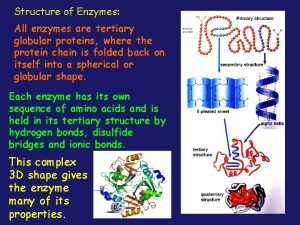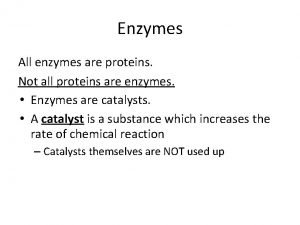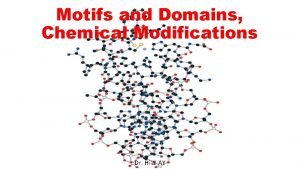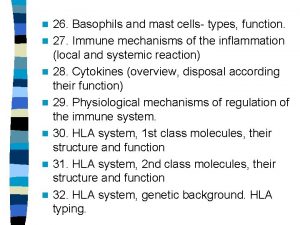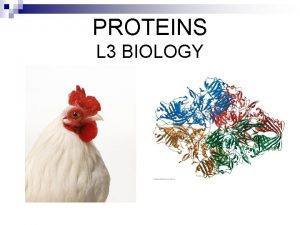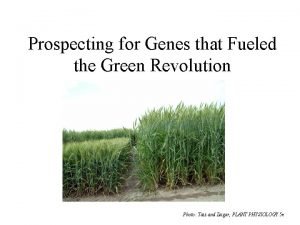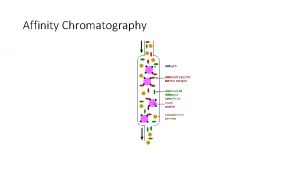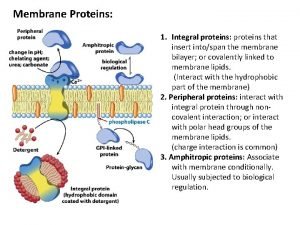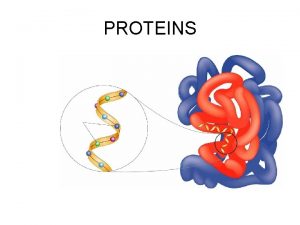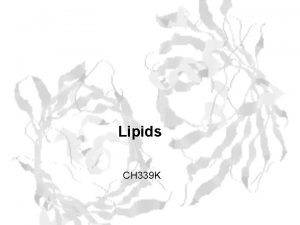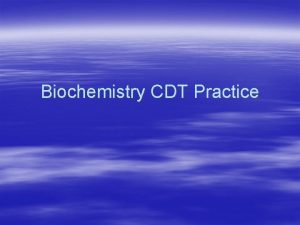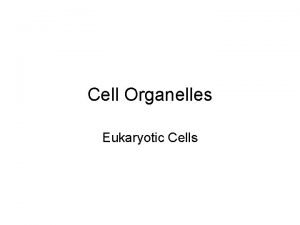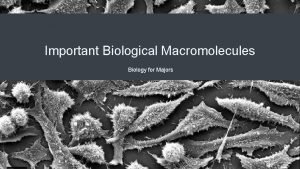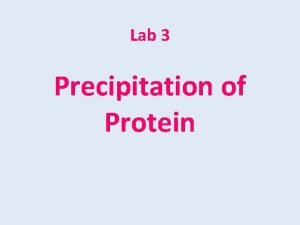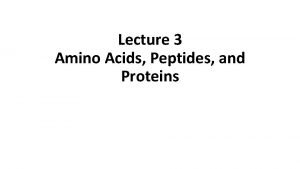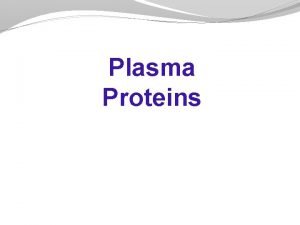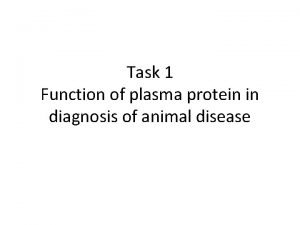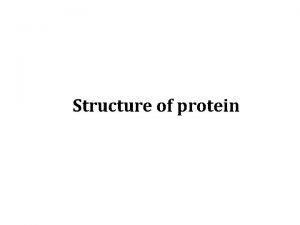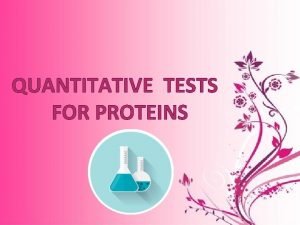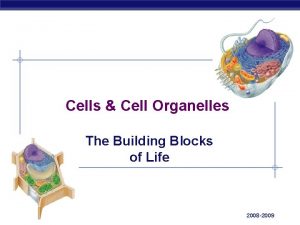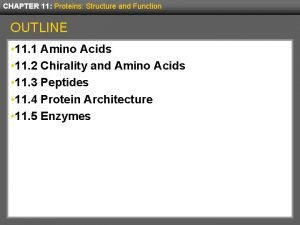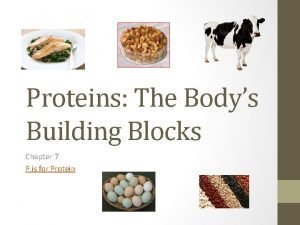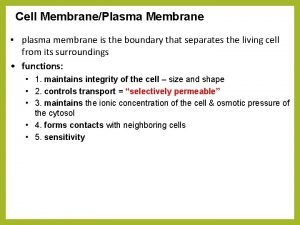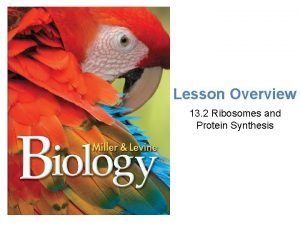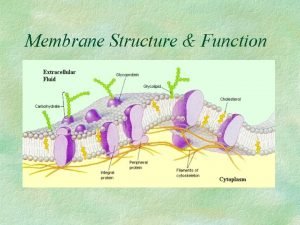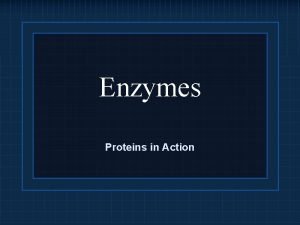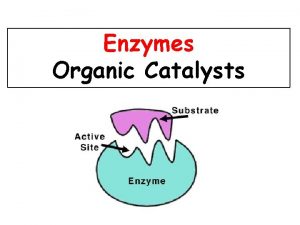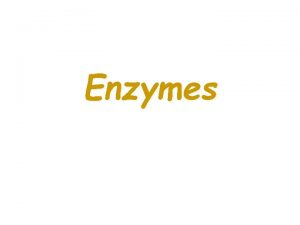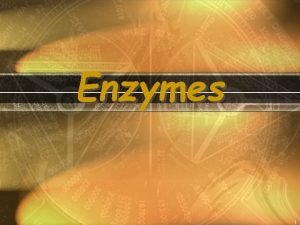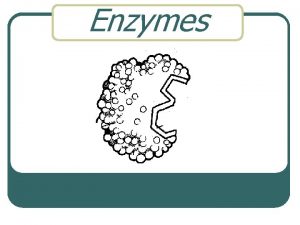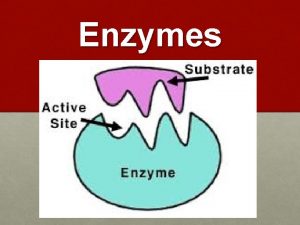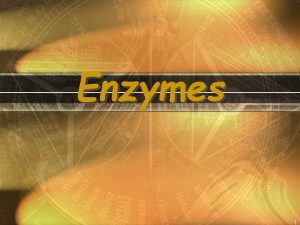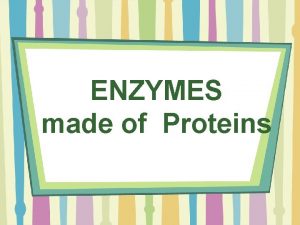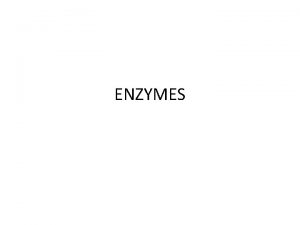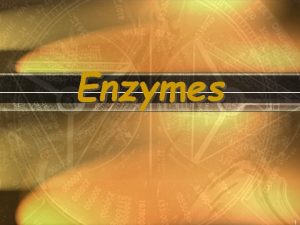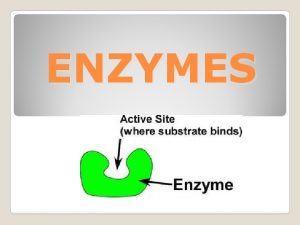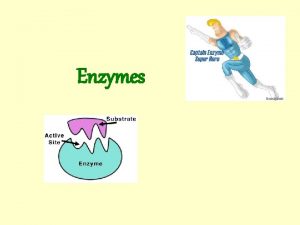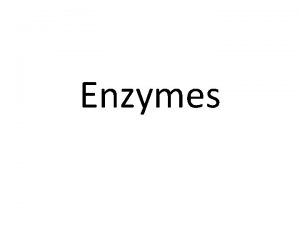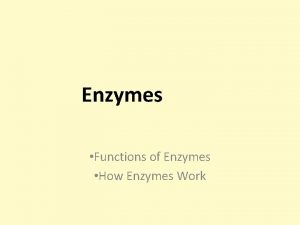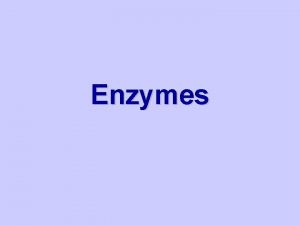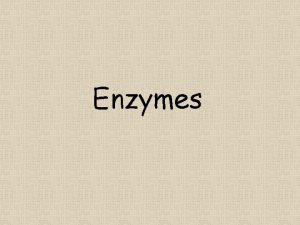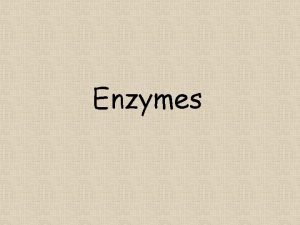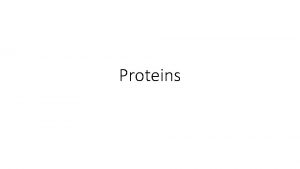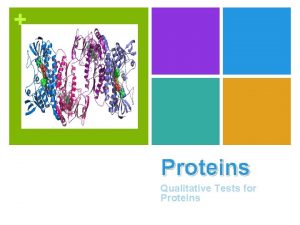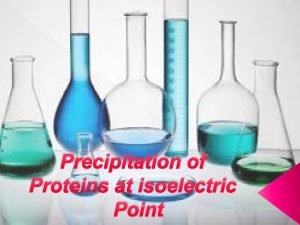Enzymes Enzymes 1 All enzymes are proteins Enzymes

































- Slides: 33

Enzymes: Enzymes 1. All enzymes are proteins Enzymes are proteins that get stuff done. • Some Enzymes break molecules apart. – Hydrolysis • Some Enzymes put molecules together. – Dehydration Synthesis

• Enzymes digest food into raw materials. • Enzymes build molecules your body needs using raw materials.

2. Enzymes are called catalysts • Enzymes speed reactions up. • Enzymes reduce the activation energy needed for a reaction to occur. Activation Energy: Energy needed to start a reaction.

Compound X increases the rate of the reaction below. Compound X is most likely 1. an enzyme 2. a lipid molecule 3. an indicator 4. an ADP molecule

Which is the enzyme? Which is the substrate? What are the products? Deh. Synthesis or Hydrolysis?

3. Enzymes are reusable • They are not changed by the reaction. • After an enzyme works on a substrate, it lets it go and moves onto the next one.

4. Enzymes are Specific • The shape of the enzyme is complementary to the shape of its substrate.

This enzyme would most likely affect reactions involving… 1. molecule A, only 2. molecule C, only 3. molecules B and D 4. molecules A and C

Enzymes are proteins A. The amino acid sequence of a protein determines what shape it will take. B. The shape of a protein decides what its function is.

• Substrate: The reactant that an enzyme works on. • An enzyme has a very specific shape to match its substrate, like a lock and key. • Maltase breaks maltose, and ONLY maltose. (Enzyme names usually end in –ase. )

Enzyme Names • What breaks sucrose? – Sucrase • What breaks fructose? – Fructase • What breaks lactose? – Lactase • What breaks protein? – Protease

• What’s the Substrate? • Active site: The hole on the enzyme where the substrate fits.

Rigid Lock and Key Model

5. Enzyme function is very dependant on its shape. • Denaturing: When a protein’s shape is ruined by extreme temperatures, or p. Hs.

Identify A, B, and C.

Which structures represent products of digestion? 1. A and D 2. B and C 3. B and E 4. D and E

Quiz Tuesday 1. Building blocks of organic molecules 2. Dehydration Synthesis/Hydrolysis 3. Enzymes 1. 2. 3. 4. 5. How rate is affected by temp, p. H, [enz], [sub] Understand pictures of enzymes, substrates How are enzymes named? Denaturation. Catalyst-

Enzymes are proteins • An enzyme that works in your stomach probably works best at what temperature and p. H?

Protein Shape is very sensitive to p. H and Temperature • Each protein works best at one certain p. H and one certain temperature. • Too hot or too cold will slow down activity • Too acidic or too basic will slow down activity.

Reaction Rate versus p. H

Rate of Enzyme Reactions can happen faster with: 1. Proper temperature 2. Proper p. H

The optimum temperature for the action of this enzyme is approximately 1. 2. 3. 4. 15°C 22°C 37°C 50°C

Which enzyme shows the greatest change in its rate of action with the least change in p. H? 1. A 2. B 3. C 4. D

Which two enzymes would function in a region of the human body having a neutral p. H? 1. A and B 2. B and C 3. C and D 4. B and D

3. More substrate added, or 4. More enzyme added But the reaction rate will level off. WHY?

• If you add more enzymes to this situation, productivity will increase until…. the enzymes have nothing to work on. Enzyme Substrate

• If we add more substrate, productivity will only increase until… all enzymes are working as fast as they can. Enzyme Substrate

Will adding substrate help? YES

Will adding substrate help? YES

Will adding substrate help? NO

Rate will level off.


Why are enzymes considered to be catalysts? • They speed up reactions –By lowering activation energy.
 Antigentest åre
Antigentest åre All enzymes are globular proteins
All enzymes are globular proteins Not all enzymes are proteins
Not all enzymes are proteins Name a point that is collinear with the given points
Name a point that is collinear with the given points Motifs and domains of proteins
Motifs and domains of proteins Intracellular proteins
Intracellular proteins Facts about proteins biology
Facts about proteins biology Conjugated proteins
Conjugated proteins Della proteins
Della proteins Affinity chromatography principle
Affinity chromatography principle Integral proteins hydrophobic
Integral proteins hydrophobic Monomers in proteins
Monomers in proteins Integral and peripheral proteins
Integral and peripheral proteins Organic compounds such as proteins and starches are too
Organic compounds such as proteins and starches are too Microtubules analogy
Microtubules analogy Protein pump vs protein channel
Protein pump vs protein channel Monomers that make up proteins
Monomers that make up proteins Precipitation of proteins by strong mineral acids
Precipitation of proteins by strong mineral acids Simple proteins
Simple proteins Function of plasma protein
Function of plasma protein Globulin function
Globulin function Quantitative determination of proteins
Quantitative determination of proteins What is proteins
What is proteins Quantitative test for proteins
Quantitative test for proteins Transmembrane
Transmembrane What cell organelle is like lysol spray cleaning the cell
What cell organelle is like lysol spray cleaning the cell Endoplasmic reticulum factory part or worker
Endoplasmic reticulum factory part or worker Steroid hormone lipid
Steroid hormone lipid Salt bridge amino acids
Salt bridge amino acids Proteins the body's building blocks worksheet answers
Proteins the body's building blocks worksheet answers Functions of membrane proteins
Functions of membrane proteins Genes contain instructions for assembling
Genes contain instructions for assembling Cummings
Cummings Nucleic acid food examples
Nucleic acid food examples

